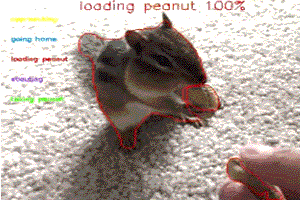The focus of our research is to address (1) how neuronal development contributes to the assembly and function of the nervous system, and (2) how defects in this process lead to brain disorders. We take a multidisciplinary approach that include genetics, cell biology, developmental biology, biochemistry, advanced imaging (for neuronal structures and activity), electrophysiology, computation (including machine learning and computer vision) and behavioral studies.
We are currently studying the neural basis for decision accuracy. We established imaging and computational methods for analyzing neural activities in the entire central nervous system (CNS) of the Drosophila larva. Moreover, we are exploring the possibility of applying the biological neural algorithms to robotics for testing these algorithms and for improving robot performance.
A major goal of neuroscience is to understand the neural basis for behavior, which requires accurate and efficient quantifications of behavior. To this end, we recently developed a software tool—named LabGym—for automatic identification and quantification of user-defined behavior through artificial intelligence. This tool is not restricted to a specific species or a set of behaviors. The updated version (LabGym2) can analyze social behavior and behavior in dynamic backgrounds. We are further developing LabGym and other computational tools for behavioral analyses in wild animals and in medicine.

The behavior that this chipmunk performed was identified and quantified by LabGym, an AI-based software tool that the Ye lab developed for quantifying user-defined behaviors.
What are some of your most interesting projects?
1) Develop AI-based software tools for analyzing the behavior of wild animals and human.
2) Use biology-inspired robotics to test biological neural algorithms.
How did you end up where you are today?
Since my teenage years, I have been curious about how brains (human’s and animals’) work, enjoyed playing with electronics, and learning about computational sciences. My curiosity and opportunities led me to become a neuroscientist. When I had my own research team and the resources to explore my other interests, I started to build simple electronic devices for my neuroscience research and to collaborate with computational scientists who are experts in machine learning and computer vision. My lab now combines these approaches in our neuroscience research.
What makes you excited about your data science and AI research?
I am very excited about the interactions between neuroscience and data science/AI research. This is a new area and has great potential of changing the society.
